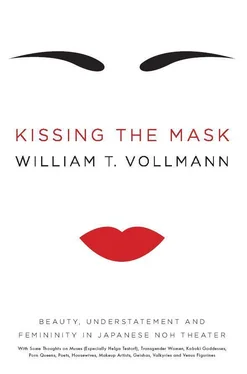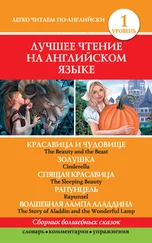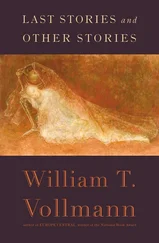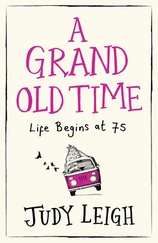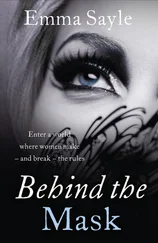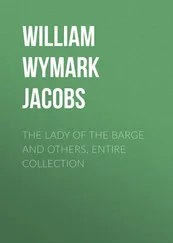For the first few years I diligently collected macrons (those bars which in Japanese transliterations so often bask over the letters “u” and “o”). One sometimes meets “Noh” without its “h,” and then with or without a macron. Dogen’s thirteenth-century “Genjo Koan” may glide onstage wearing three macrons, one of them roofing Dogen himself. But no romanization is consistent; and so, reader, I took pity on you and on myself. You will see no macrons here.
All Japanese proper names are given, as is customary for them (not for us), with the family name first.
My great gratitude to the following Noh actors (and actress): Mr. Umewaka Rokuro (whose kind wife I also wish to thank for her kindness), the late Mr. Kanze Hideo, Mr. Mikata Shizuka, and Ms. Yamamura Yoko. Learning a little about Noh has been one of the most thrilling experiences of my life.
Mr. Yoshio Kou introduced me to some of the above, to several other people mentioned here, and, as ever, to various secret islands of the floating world aesthetic. He has been a great teacher, a fatherly guide and a superhuman night owl who could always drink more and stay up later than I. Mr. Kou, I will always admire you.
Dr. Sato Yoshiaki, Dr. Yokoyama Taro, formerly of the University of Tokyo, Mr. Jeff Clark, Professor Nishino Haruo, Director of the Nogami Memorial Institute for Noh Studies at Hosei University, Tokyo, and Ms. Hagashi Sumiko, curator of the Kanazawa Noh Museum, gave me much Noh information and corrected more mistakes than I can bear to think of.
I am deeply indebted also the geishas and ochaya-sans mentioned in this book: Kofumi-san, Konomi-san, Danyu-san, Imamura-san, Masami-san, Suzuka-san, Fukutaro-san and Hachishige-san. I will never forget the ephemeral beauties, each unique, of the handful of geisha dances which it has been my privilege to see.
The mask carvers Mr. Otsuka Ryoji and Ms. Nakamura Matsue were a great help. I met the sweet Ms. Nakamura on enough occasions to fall under her spell. Both of these people, who, being among the most renowned exemplars of their craft now living, must have better things to do than chat with me, were patient with my ignorance. Ms. Nakamura corrected the captions to the mask photographs which appear in this book.
The onnagata Mr. Ichikawa Shunen gave me an openhearted introduction to Kabuki’s performance of femininity. My sincere thanks to him.
Katy, Jennifer and other Los Angeles transformers trusted me, taught me and drank with me, all at the same time. Yukiko did what she could with unpromising material.
I gratefully thank Hilary Nichols, “Sachiko” and Marina Vulicévic for expressing their tripartite femininities to me.
Regarding Kawai Takako (one of whose many other names is Silver Flower Star Goddess), the dedication says it all.
Tochigi Reiko (also known as Precious Moon Goddess) went painstakingly over a draft of the manuscript, resolving orthographic inconsistencies and saving me from any number of errors. Still better, she continued to be a considerate friend who was usually up for a bowl of grilled eel and a shot of booze in Kabukicho. Interpreter, translator, go-between and answer lady in a number of disciplines, Reiko is also the politest person I have ever met.
Mrs. Keiko Golden (the Jade Empress of the Innermost Diamond) and the other translators she found for me, Ms. Sumino Junko and Ms. Yasuda Nobuko, were all excellent. Keiko, thank you for being so kind to me all these years.
I would like to thank Dan Halpern, Ginny Smith, David Koral, Mary Austin Speaker, Bruce Giffords and Miranda Ottewell for their various contributions to this book. Mary went many extra miles to make the illustrations reproduce as nicely as possible.
Richard Grossman did me the great favor of sending me The Blue Cliff Records as a present. This book helped me understand a little more about snow in a silver bowl. Prof. Chris Martin gave me a copy of Pontano’s Baiea , from which I quote in the chapter “What Is Grace?” Declan Spring and Thomas Keith at New Directions furnished me with some great books, including the anthology of Chinese poetry, which I cite in the chapter on perfect faces. Thank you all, my friends.
Ben Pax, Michael Markowitz, Jake Dickinson, Mary Swisher and my sister Ann all helped me in various personal ways. Mr. Joseph Mattson always knew which bars to go to when. And I wish to thank Katie Peterson, for reasons best known to her (they may have something to do with Anne Gregory’s yellow hair). Teresa McFarland was, as ever, solace, help, interlocutor, inspiration and makeup consultant.
My Norwegian editor, John Erik Riley, and Gina Granum, who directed the Norsk Litteraturfestival in Lillehammer, made it possible for me to present a preliminary version of the chapter on Norse beauty to a knowledgeable audience. I thank them in all friendship.
Ms. Susan Golomb of her eponymous agency dazzled me with her feminine beauty, not to mention her business qualities. I am equally grateful to her two assistants from that period, Mr. Casey Pannell and Ms. Terra Chalberg.
The American Academy of Arts and Letters and Ohio State University (in the later institution I think especially of Geoff Smith and Lisa Iacabellis) helped subsidize this book. (The advance I received will recoup at best one-third of the money I laid out.) My thanks to both institutions for supporting these few frivolous swims into the floating world. The students of staff of Deep Springs College gave me a beautifully isolated home and perfect company for a month while I was working on this book. Since Noh is so slowed down, and geisha dance so brief, and all human beauty so temporary, there is no place better to consider such matters than the desert, whose solitudes are deep, slow, yet ever altering.
WILLIAM T. VOLLMANNis the author of seven novels, three collections of stories and a seven-volume critique of violence, Rising Up and Rising Down . He is also the author of Poor People , an examination of poverty worldwide through the eyes of the impoverished themselves; Riding Toward Everywhere , an investigation of the trainhopping hobo lifestyle; and Imperial , a panoramic look at Mexican California. He has won the National Book Award, the PEN Center USA West Award for Fiction, a Shiva Naipaul Memorial Prize, and a Whiting Writers’ Award. His journalism and fiction have been published in the New Yorker, Esquire, Spin , and Granta . Vollmann lives in Sacramento, California.
Visit www.AuthorTracker.com for exclusive information on your favorite HarperCollins author.
1Moreover, it’s not precisely about Noh drama, either. Whatever mistakes of fact I make, few people will catch them, even should my ignorance someday be exposed by translation into Japanese. A taxi driver in Kyoto said: “My opinion is that Noh is the art form which eliminates and simplifies to the maximum. I am not interested myself, but I know what Noh is. If it enters your intuition, so that you don’t even need to think, then you will instantly understand it.” — Oh, he knew, all right! — In Tokyo, the old proprietor of the sushi restaurant (established by his family in 1910) where my interpreter and I occasionally ate dinner proudly informed us that one of his customers was an Intangible Cultural Treasure; he advised us that torchlit Noh performances occurred in the park across the way; he himself preferred karaoke. — And at so many Noh performances the theater was almost empty. Often my fellow spectators would nod off; I’d see the head drop, the shoulders seeming to expand even as the ghost onstage was stamping, all emerald and tan and gilded! So perhaps it was always that way. A seventeenth- or eighteenth-century snatch of light verse about illicit visits to the pleasure quarter runs: “His book of Noh lessons: a prop for lies to tell his father.”
Читать дальше
